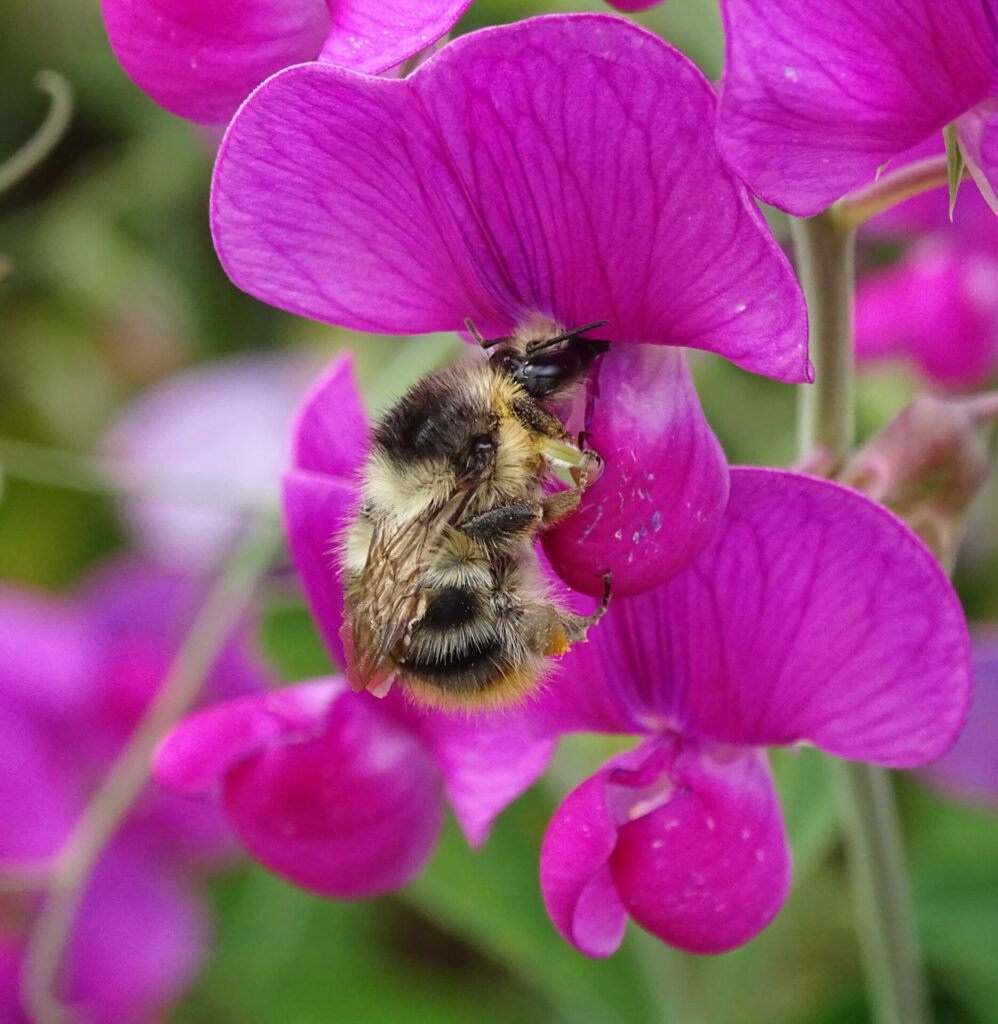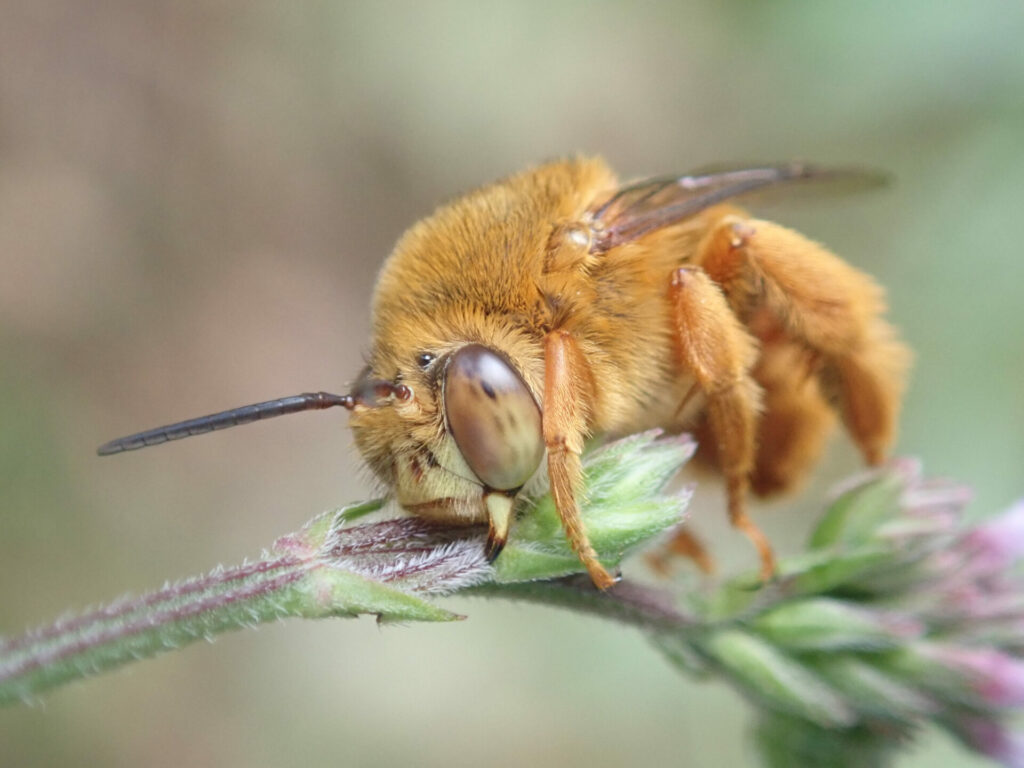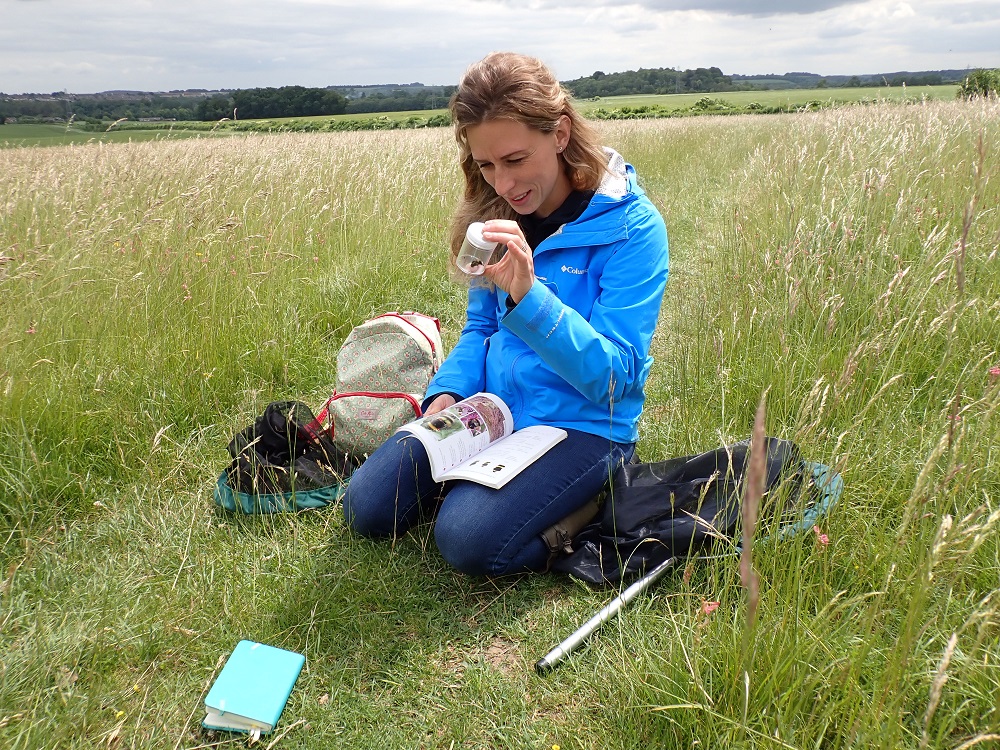Unless you’ve been living under a very big rock, it’s impossible to escape the buzz around bees and their plummeting populations. Globally it’s estimated that one in six bee species has gone regionally extinct.
Essential for the health of people and the planet, bees are biologically driven to gather pollen as they have for millennia, but could be snuffed out of existence in a matter of decades. Alarmingly, one third of Ireland’s 98 bee species are predicted to perish by 2030, while across the pond in New York, 99 per cent of the state’s bumblebees have already vanished from its skies.
Forming a link within a long chain of interdependent species, these indispensable pollinators perpetuate life on earth. Playing a vital role in nature’s food webs, as well as our own, bees’ fragile future is a humanitarian issue too.
Put starkly, a bee-less planet would struggle to sustain a global population of eight billion people
Critical allies in the fight against hunger, losing our fuzzy friends would mean bidding farewell to our favourite fruit and veg. As for your morning coffee ritual? That would be reserved for the super-rich. Its estimated 70 per cent of the world’s top food crops from apples to avocados rely on pollinating bees, representing a staggering 63 per cent of the world’s nutrition. Put starkly, a bee-less planet would struggle to sustain a global population of eight billion people.
All Bees Great and Small

Ever heard of Australia’s teddy bear bee or the tear-drinking, metallic green sweat bee measuring a grain of rice? Us neither! And therein lies the problem. Bees come in all shapes, sizes and colours, you see. And yet, it’s the domesticated western honey bee – prized for its economic ecosystem services – that remains the poster child for bee conservation, whilE 20,000 other species fly quietly under the radar.
According to the UN’s Food and Agricultural Organization, the global number of honeybee hives stands at 90 million. Despite the Doomsday messaging, insect conservation charity Buglife’s Andrew Whitehouse told The Guardian that ‘honeybees are not in decline.’ But the same can’t be said of their understudied wild bee cousins. Ignoring their plight will be at our peril, their invisible extinction setting unprecedented biodiversity loss in motion.
A Perfect Swarm

There’s no sugar-coating it, humans are silencing bees’ buzz with a perfect swarm of habitat devastation, introduced species, climate change and pesticides.
A necessary evil of highly industrialised farming practices, toxic pesticides are one of bees’ biggest nemeses. And they’re not just confined to crops. 2023 marks a decade since the single largest pesticide kill of native bumblebees in North America happened. The tragedy unfolded in a shopping mall parking lot in the city of Wilsonville, Oregon, when its blooming linden trees were sprayed with dinotefuran: a type of neonicotinoid (or neonic).
Designed to kill crop-harming pests, neonics indiscriminately harm ecologically-valuable species like bees and songbirds. Banned in the EU, the British government controversially granted farmers permission to use these toxic pesticides – which can remain in soil for up to 30 years – in 2022.
According to Dave Goulson, a Professor of Biology at the University of Sussex, a single teaspoon of neonicotinoid can wipe out 1.25 billion honeybees. In its diluted form, it slowly sickens colonies by undermining their immune systems, impairing their memory and even damaging their unborn larva.
A single teaspoon of neonicotinoid can wipe out 1.25 billion honeybees. In its diluted form, it slowly sickens colonies by undermining their immune systems, impairing their memory and even damaging their unborn larva
According to a study reported on by New Scientist, neonicotinoids have been found in honey from every single continent. In a worrying trend, last year The US Environmental Protection Agency approved the use of four new neonics, while drought-stricken Chile’s huge honeybee hive losses are being blamed on its five-fold increase of pesticide imports over the last two decades.
Together with varroa mites, pesticides can also cause Colony Collapse Disorder (CCD), whereby worker bees abandon their queen. Last year, more than 50 million varroa-diseased bees were killed off in New South Wales to protect Australia’s billion-dollar almond industry.
Bees are also feeling the wrath of a warming planet. Invasive, bee brood-eating ‘small hive beetles’ are thriving amidst climate change, and more volatile weather events are resulting in prolonged periods of drought, starving bees of their nectar.
According to a new study of 66 bumblebee species in North America and Europe, climate change decreases bees’ chances of colonizing new areas. It’s also accelerating habitat loss: the main driver of dwindling bee numbers worldwide.
Monoculture and deforestation devastate plant diversity and shrink bees’ foraging ground, with solitary bees hit hardest. Accounting for 95 per cent of all bee species, solitary bees are said to pollinate plants more efficiently than their honey-making, hive-living cousins.
‘Between 1934 to 1984 [Britain] lost at least three million hectares (97 per cent) of its lowland meadows,’ Conservation Manager Michael Rogers of UK charity The Bumblebee Conservation Trust tells The Ethicalist, continuing ‘bumblebees are at particular risk from habitat declines and urbanisation.’
Building Better Connections
Fragmented habitat is also threatening our favourite flower-powered insects. While most of us associate wildlife corridors with majestic elephants or jungle-dwelling primates, these unbroken nature highways are equally important for airborne bees. Launched this May, The Bumblebee Conservation Trust’s latest initiative hopes to bring connectivity to Carmarthenshire Coast’s rare mosaic habitat of freshwater marshes, dune grasslands and pine forests in Southwest Wales.
It’s one of the UK’s last remaining strongholds for rare bee species like the brown-banded carder and red-shanked carder. ‘[The idea is to make] the area permeable for bumblebees and other invertebrates to move from one area to the next,’ Rogers explains of the trust’s two-year-long project.

Even working farms can be transformed into bee-friendly environments. Often painted as evil bee baddies, farmers are uniquely placed to be these prolific pollinators allies, a fact that hasn’t gone unnoticed by Bee Friendly Farming Australia.
In partnership with not-for-profit Pollinator Partnership, BFF’s is establishing healthy pollinator ecosystems by giving certification to commercial farms (large and small) that uphold ecological promises, from introducing all-season flowering plants to providing permanent nesting habitat.
‘Approximately 70 per cent of Australian native bees nest in the ground (including the blue banded bee),’ BFF’s Pollination Biologist Lea Hannah tells The Ethicalist. ‘The European Honeybee is still the main pollinator for pollinator-dependent crops in Australia. However, native bees and other pollinators provide free, supplementary pollination services to commercial farms,’ she continues. To date, BFF has certified 130,000 acres of land across six Australian states, covering 12 different industries including macadamia nuts and wine.
Bee The Change

Encouragingly, there are hopeful stories of bees’ remarkable resilience and native species being brought back from the brink.
Belgium discovered four species of bee that are new to the country last year, while the rare rainforest-dwelling pharohylaeus lactiferus was spotted in Queensland in 2021 after a century-long absence.
Two thousand miles away on a remote island in Indonesia’s Maluku archipelago, the world’s largest bee buzzes in the sky once more. And against all odds, Puerto Rico’s honeybees are rebounding after the Caribbean island’s deadly twin hurricanes in 2017. This is largely thanks to the Karma Honey Project, whose tireless work involves rehoming bee colonies destined for extermination, supporting urban farmers by pollinating organic crops, and reinvigorating land with bee-friendly flowers.
In another win for our fuzzy friends, last year a Californian court ruled that four species of bee could be classified as fish so that they can be protected under the state’s Endangered Species Act! Despite invertebrates constituting 97 per cent of the animal kingdom, this marginalised group continues to be underrepresented by the IUCN. Giving all bees visibility and greater protections are essential to ensure a bee-pocalypse remains the stuff of nightmares, and not reality.
For more features on the environment and wildlife within it visit our Natural World section.













